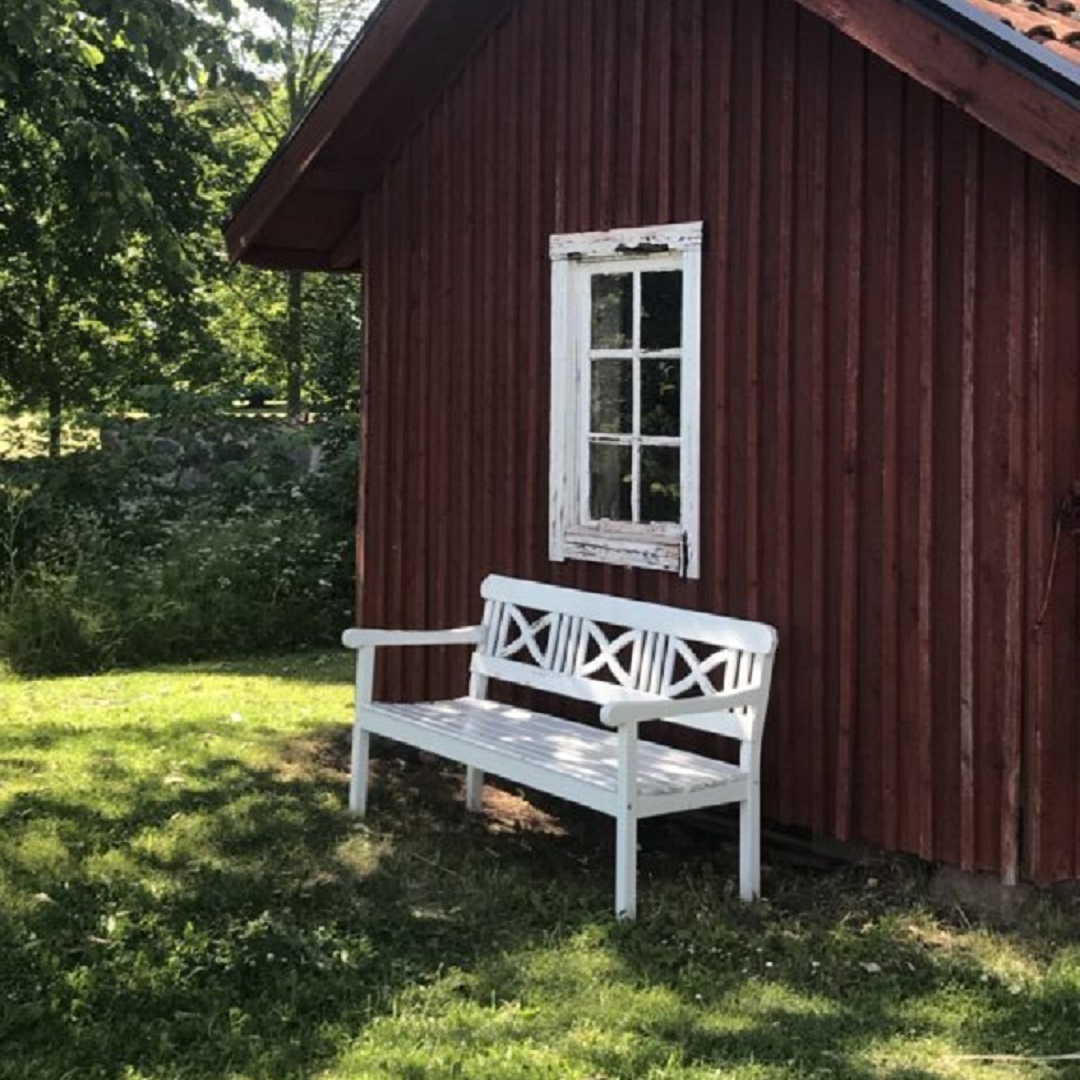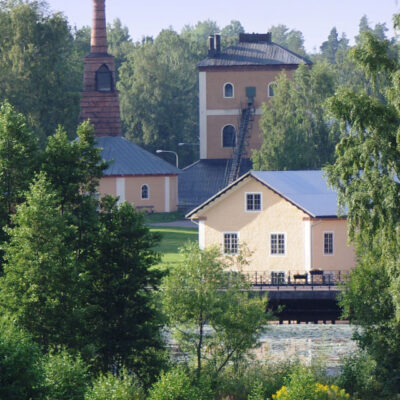Historia
Brevens Bruk har medeltida anor. Brevens gård omtalas år 1317 då den skänktes till Riseberga kloster av kyrkoherde Laurentius i Kumla.
Claes Rålamb (1622-1698) fick 1676 tillstånd av Bergskollegium att starta en järnbruksrörelse och anlade då bl.a. en stångjärnssmedja med hammare vid Lilla Breven. För att ytterligare kunna förädla järnet anlades en knipphammare (en hammare för klenare smide än stångjärn). Tillgången på just skog var den främsta anledningen att Rålamb fick tillståndet, villkoret var att han skulle ta träkolet för järnframställningen ur den egna skogen. Staten hade vid denna tid en ambition att decentralisera järnhanteringen till platser utanför Bergslagen på grund av skogsbristen inom det området. Brevens bruk hade naturliga förutsättningarna för den järnbruksverksamhet med god tillgång på vattenkraft och stora relativt opåverkade kringliggande skogar.
Sonen Gustaf Rålamb (1675-1750) övertog bruket efter sin far. Han utvidgade verksamheten och köpte kvarnen vid Stora Breven, en halv kilometer nedanför lilla Breven. Stora Breven kom att kallas Nedre bruket. Vid platsen för Nedre bruket finns idag två 1700-talsbyggnder bevarade.
Under mitten av 1700-talet steg priserna på stångjärn och det blev lönsamt att hämta malm från avlägsna platser som t.ex. Utö i Stockholms skärgård. Från Utö fraktades malmen på pråmar över Mälaren och Hjälmaren och vidare till Brevens Bruk.
Efter Gustaf Rålambs död 1765 började det godskomplex som han byggt upp att avvecklas. År 1774 såldes egendomen till ryttmästaren David Henrik Hildebrand (1761-1808). Han hade betydande ekonomiska tillgångar och var ägare till bl.a. Ericsberg i Södermanland. Han gjorde Bystad och Breven till fideikommiss år 1778.
Fideikommisset övergick till systerdottern Sophia Ulrika Bonde (1787-1867), som år 1815 gifte sig med generaladjutanten greve Johan August Anckarsvärd (1783-1874). De utvecklade produktionen och hittade nya marknader för brukets olika produkter, bl.a. genom att tillverka komponenter i gjutgods för de maskiner som då behövdes för jordbrukets omfattande mekanisering. En ny masugn, rostugn och en mekanisk verkstad byggdes under 1820-talet. En ca 300 meter lång rak kanal byggdes från nuvarande Herrgårdsdammen för att leda vattnet vidare förbi Nedre bruket, kanalen finns idag bevarad i sin helhet.
En viktig orsak till den goda utvecklingen för Brevens bruk under 1800-talet var Västra stambanan som stod klar under 1850-talet. Stambanan kompletterades med en bibana från Hallsberg som bl.a. gjorde att malmen kunde transporteras ända till Kilsmo station, en halv mil norr om Brevens Bruk. Under 1880-talet byggdes en smalspårig järnväg mellan Kilsmo och Breven. Bruket svarade för transporterna med egna ånglok. Banan togs dock bort år 1940 och lokstallet revs senare.
I början av 1900-talet var det åter dags för en modernisering av bruket. Masugnen byggdes om år 1903 och en helt ny rostugn byggdes år 1905.
De vikande järnkonjunkturerna efter första världskriget ledde till en succesiv avveckling av brukets verksamheter. År 1917 togs stångjärnshammaren ur drift och masugnen släcktes ned år 1933. Gjuteriverksamheten pågick dock ända fram till 1980-talet. Så sent som år 1976 byggdes ett helt nytt gjuteri, men verksamheten blev aldrig lönsam utan avvecklades succesivt och 1986 lades verksamheten ned för gott.
Huvudnäringen för Brevens Bruk är idag skogsbruk, jordbruk och fastighetsförvaltning.
Sedan fideikommissystemet avskaffades i Sverige under 1960-talet förvaltas egendomen som ett fideikommissaktiebolag inom familjen Gripenstedt. Johan Gripenstedt (1922-2009) var den siste fideikommissarien.
Bebyggelsen på Brevens Bruk
Brevens Bruk har en unik bebyggelsemiljö med en bebyggelsestruktur som liknar de kända bruken i t.ex. Uppland. Huvuddelen av de byggnader som idag karakteriserar bruksmiljön tillkom under 1830-40 talen. Det var en framgångsrik och expansiv tid för bruket och då skapades de ekonomiska förutsättningarna för den karakteristiska bebyggelsemiljö som präglar Brevens Bruk.
Senare under 1800-talet tillkom flera produktionsbyggnader och bostäder för anställda. De fick en likartad utformning med spritputsade fasader och omfattningar i slätputs. Under 1840-talet byggdes en brukskyrka i nyklassicistisk stil. Kyrkan användes också som skola för bruket innan en särskild skola för brukets barn byggdes under 1870-talet. Kyrkan ägdes av bruket fram till 1940-talet. Den tillhör idag Asker-Lännäs pastorat.
Som vanligt var i denna typ av bruksmiljöer så fick skolan en för tiden mycket påkostad utformning med en närmast monumental prägel. Skolan kunde byggas genom att Sofia och Johan August Anckarsvärd fonderat medel för ett skolbygge. Intill skolbyggnaden byggdes också år 1914 en bostad för lärare och präst.
Den enda byggnad som tillkommit i den centrala delen av bruksmiljön efter 1800-talet är brukskontoret som byggdes i en anpassad stil i slutet av 1940-talet. En förändring som skedde under 1900-talet var också att bruksbyggnadernas färgsättning i rosa konsekvent ändrades till dagens ockragula kulör under 1930-talet.
Mot bakgrund av att byggnaderna och anläggningarna i Brevens Bruk av Länsstyrelsen har klassats att ha ”synnerligen högt kulturhistoriskt värde” har stora delar av Brevens Bruk förklarats som byggnadsminne.



